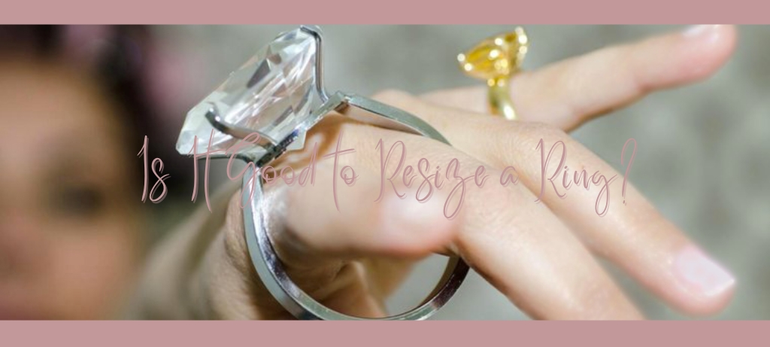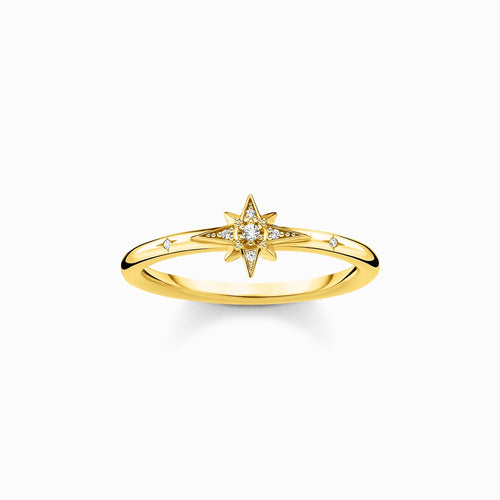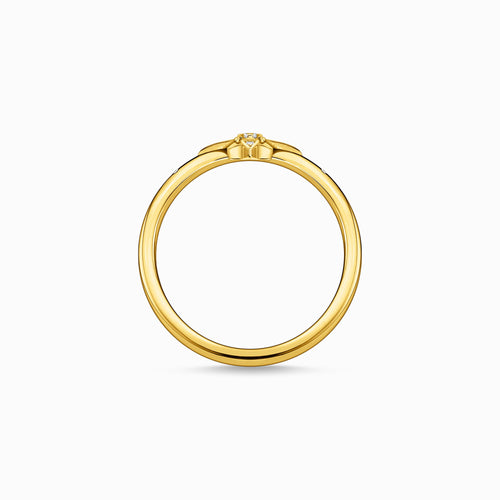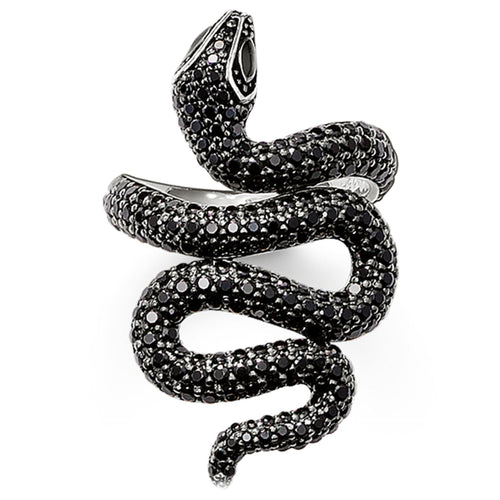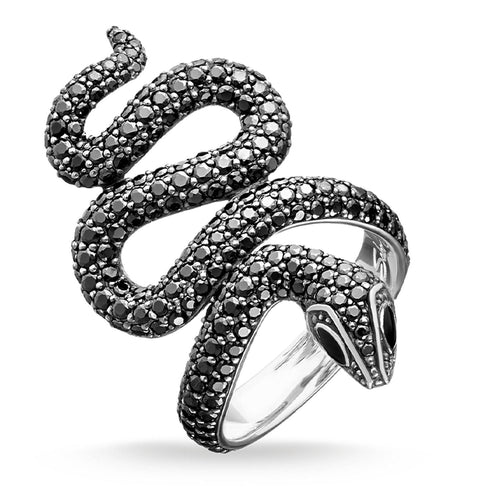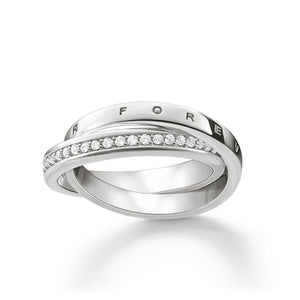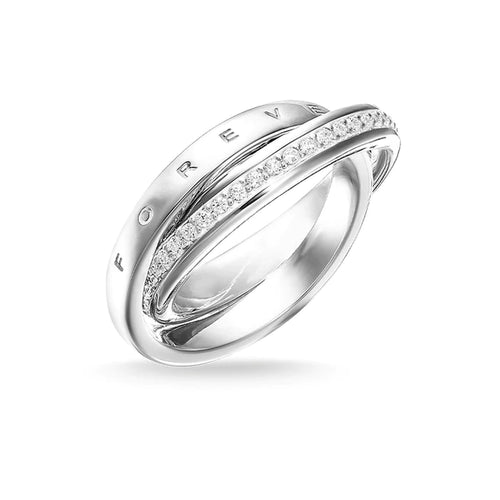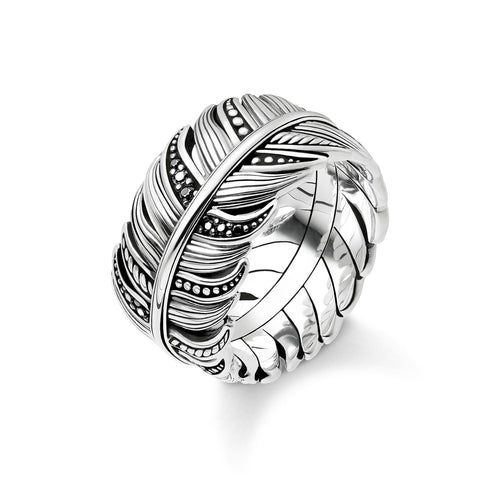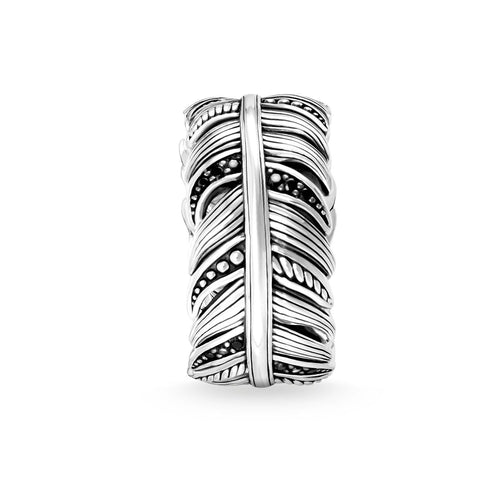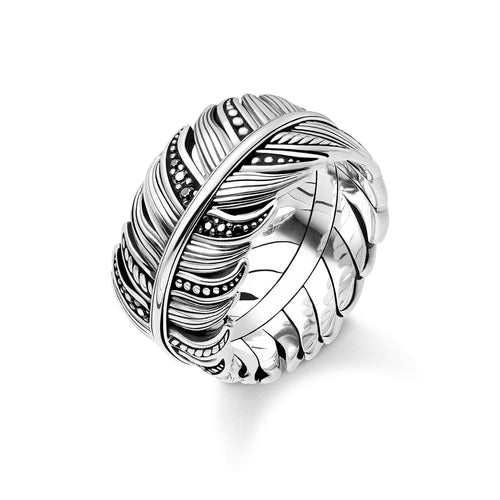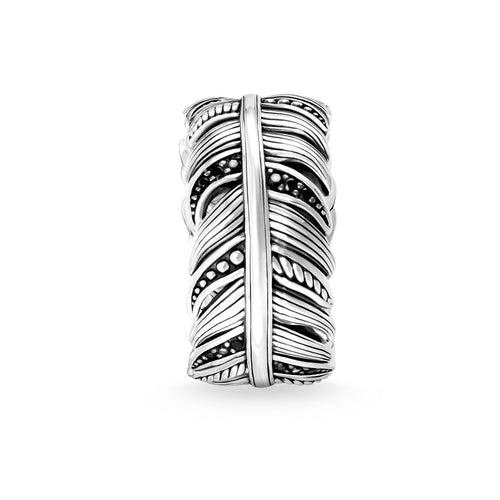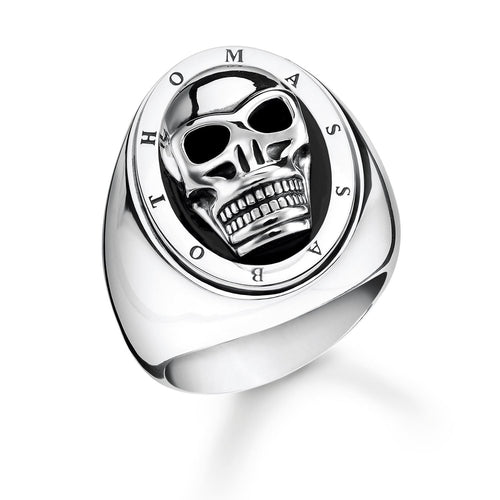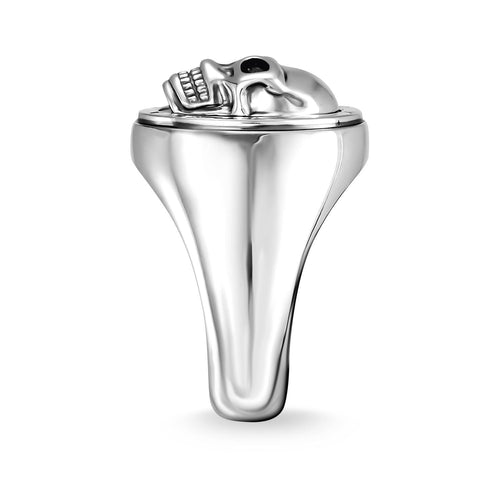Properly fitting rings are essential for comfort and aesthetic appeal of most rings. When a ring doesn't fit correctly, it can cause discomfort and may even lead to ring damage over time. Understanding whether it is good to resize a ring is crucial for maintaining its value and integrity.
Resizing a ring involves adjusting its size to ensure a snug fit on the finger. This process can be done for various reasons, including weight fluctuations, receiving a ring as a gift, or inheriting a family heirloom. While resizing can enhance the wearability of a ring, it’s important to weigh the pros and cons carefully.
Key Takeaways:
-
Benefits of Reizing a Ring:
-
Achieves an exact fit for better comfort
-
Preserves the ring's structure and value
-
Enhances the ring's appearance
-
-
Risks of Reizing a Ring:
-
Potential for damage to stones and intricate detailing
-
Impact on material integrity (e.g., gold, silver, tungsten)
-
Limitations based on the type of ring (e.g., engagement rings, eternity bands)
-
Understanding the intricacies of ring resizing helps make an informed decision, ensuring your ring remains a cherished piece for years to come.
Understanding Ring Resizing

Ring resizing is the process of adjusting a ring's size to ensure it fits perfectly on your finger. Whether it's an engagement ring, a wedding band, or an eternity ring, ensuring the correct ring size is crucial for both comfort and aesthetics. But why do we need to resize rings, and what does the process involve?
Common Reasons for Resizing a Ring
-
Weight fluctuations: Changes in weight can affect finger size, making a ring too tight or too loose.
-
Inherited or gifted rings: Receiving a beautiful ring from a loved one that doesn’t fit properly.
-
Changes in style: Sometimes, a ring style might not sit well with everyday wear, necessitating a resize for a more snug fit.
-
Comfort: Ensuring that your ring doesn’t apply too much pressure or feel too loose.
The Resizing Process
The process of resizing a ring involves several steps and considerations. Here’s a simplified breakdown:
-
Evaluation by a Jeweler: A reputable jeweler will first evaluate the ring's structure and material. Certain materials, like gold, silver, tungsten, and titanium, have different resizing capabilities.
-
Determining the New Size: Using a ring size chart, the jeweler will determine the new size needed. This could mean making the ring larger or smaller.
-
Adjusting the Ring:
-
Making a Ring Larger: This can be done by adding more material or stretching the ring if there's enough exposed metal.
-
Making a Ring Smaller: This involves removing a section of the band and then joining the ends together.
-
-
Additional Adjustments: For rings with intricate detailing or complex designs, adjustments might include adding sizing beads or spring inserts to ensure a perfect fit without damaging the ring.
Key Considerations
-
Material: Rings made of rose gold, tungsten, or those with diamonds and stones may require special care during resizing.
-
Design: Eternity rings and those with complex detailing can be more challenging to resize.
-
Professional Jeweler: Always opt for a reputable jeweler to avoid ring damage and ensure the resizing process is done correctly.
Resizing a ring, whether it’s an engagement ring or a wedding band, is a delicate process that requires professional expertise. By understanding the reasons and steps involved, you can make informed decisions to ensure your rings fit perfectly and comfortably.
Is It Good to Resize a Ring?

Resizing a ring can be a game-changer, especially when you're dealing with an engagement ring or a wedding band. But is it always a good idea? Let’s break down the pros and cons to help you make an informed decision.
Pros of Resizing a Ring
Achieving a Perfect Fit
One of the most compelling reasons to resize a ring is to achieve an exact fit. Whether the ring is too loose or too tight, a simple resizing move can ensure it fits your finger size perfectly, providing a snug fit that enhances comfort.
-
Comfort and Wearability: A properly sized ring feels great on your finger. No more too much pressure or the fear of it slipping off.
-
Maintaining Value and Integrity: Ensuring a ring fits well can help maintain its value. A ring resized to the correct size is less likely to suffer from ring damage over time.
Enhancing Comfort and Wearability
-
Everyday Wear: A ring that fits well is more comfortable for daily activities. You won't need to worry about it being too tight or too loose during the day.
-
Weight Fluctuations: Life changes, and so do our bodies. Resizing accommodates weight loss or gain, ensuring your ring remains comfortable.
Maintaining the Ring's Value and Integrity
-
Professional Resizing: A reputable jeweler can resize your ring while maintaining its integrity. This is particularly important for rings with intricate detailing or made from precious metals like gold, silver, tungsten, or titanium.
-
Special Rings: Eternity rings and custom-made pieces can be resized without compromising their unique design or value, provided the jeweler is experienced.
Cons of Resizing a Ring
Potential Risks and Damages
-
Impact on Design: Resizing can sometimes affect the ring's structure or intricate detailing, especially with complex designs.
-
Material Limitations: Certain materials, like tungsten, are harder to resize. Thicker rings and bands with stones also pose challenges.
Impact on Intricate Detailing and Ring Structure
-
Design Integrity: Rings with complex detailing might lose some of their design integrity during resizing.
-
Stone Settings: Resizing can affect the setting of diamonds or other stones, potentially loosening them.
Limitations Based on Ring Material and Style
-
Material Sensitivity: Metals like rose gold and tungsten can be difficult to resize without damaging the ring.
-
Style Constraints: Eternity bands and rings with continuous stones have limited resizing options.
Deciding whether to resize a ring involves weighing the pros and cons. While achieving a perfect fit and enhancing comfort are significant benefits, potential risks to the ring's structure and detailing must be considered. Always consult a reputable jeweler to ensure the best outcome for your cherished rings.
Factors to Consider Before Resizing

When thinking about getting a ring resized, there are several factors to consider to ensure you make the right decision. Let’s dive into these key considerations to help you navigate the resizing process with confidence.
Evaluating the Need for Resizing
First, determine if resizing is truly necessary. Are you experiencing discomfort because the ring is too tight, or is it slipping off because it’s too loose? Using a ring size chart can help you measure your finger size accurately and decide if you need to make your ring a half size larger or smaller.
Here are some common reasons for resizing:
-
Weight fluctuations causing changes in finger size
-
Receiving an engagement ring or wedding band that doesn’t fit perfectly
-
Wanting to wear an heirloom ring that is the wrong size
Consulting a Reputable Jeweler
Once you've determined that resizing is needed, the next step is to find a reputable jeweler. An experienced jeweler can evaluate the ring's structure and advise on the best course of action. Look for a jeweler who offers free resizing with your purchase or has good reviews of their resizing process.
Assessing the Ring's Material
Not all rings can be resized equally. The material of your ring plays a crucial role in determining how it can be resized. Here’s a quick overview:
-
Gold: Generally easy to resize.
-
Silver: Similar to gold, resizing is usually straightforward.
-
Tungsten: Difficult to resize due to its hardness.
-
Titanium: Also challenging to resize but not impossible.
Understanding these limitations helps you set realistic expectations for the resizing outcome.
Considering the Type of Ring
Different types of rings come with their own set of challenges when you resize them.
-
Engagement Rings: Often contain diamonds or other stones, requiring careful handling.
-
Wedding Bands: Simple bands are easier to resize than those with intricate detailing.
-
Eternity Rings: Resizing is more complex due to the continuous line of stones.
Understanding the Resizing Limits and Potential Impacts
Resizing can impact the ring's structure and intricate detailing. Here are some potential issues:
-
Ring Damage: Improper resizing can cause ring damage, especially to stones and complex detailing.
-
Material Impact: Certain materials, like rose gold and tungsten, are more susceptible to damage during resizing.
-
Adjustments Needed: Adding sizing beads or spring inserts to achieve a snug fit without altering the ring too much.
Before you decide to resize a ring, evaluating these factors can help you make an informed choice, ensuring your engagement ring still remains beautiful and fits perfectly for years to come.
The Ring Resizing Process

Resizing a ring might seem like a daunting task, but understanding the resizing process can make it feel much more manageable. Let's walk through the steps and techniques that a reputable jeweler uses to ensure your ring fits perfectly.
Step-by-Step Explanation of the Resizing Process
-
Initial Evaluation
-
The first step is to take your ring to a local jeweler for an evaluation. They will assess the ring's structure, material, and design intricacies. This initial step is crucial, especially for engagement rings, eternity rings, and custom-made pieces with intricate detailing.
-
-
Determining the New Size
-
Using a ring size chart, the jeweler measures your finger size to determine the exact ring size needed. Whether you need to make the ring larger or smaller, this measurement ensures a snug fit.
-
-
Adjusting the Ring
-
Making a Ring Larger: If you need the ring to be larger, the jeweler might add more material to the band or stretch the ring, provided there is enough exposed metal. For instance, with gold or silver rings, this is a relatively straightforward process.
-
Making a Ring Smaller: To make the ring smaller, the jeweler removes a small section of the band and then rejoins the ends. This method is common for simple bands and rings without stones.
-
Techniques Used in Resizing
-
Adding/Removing Metal: Adding extra metal is a common technique for enlarging rings, while cutting and soldering are used for reducing size.
-
Sizing Beads: For rings that need only a minor adjustment, sizing beads can be added to the inside of the band. This method is perfect for achieving a half-size change or to help a ring fit different fingers.
-
Spring Inserts: For more substantial adjustments or thicker bands, spring inserts can be used. These sit inside the ring and adjust the fit without altering the ring's external appearance.
Timeframe for Resizing
The entire process typically takes one to two weeks, depending on the complexity of the ring and the jeweler’s workload. Rings with complex detailing or those made from harder materials like tungsten may take longer.
Cost Considerations and Potential Warranties
-
Cost: The cost of resizing varies based on the material and complexity. Gold and silver rings are generally cheaper to resize compared to tungsten or titanium rings.
-
Warranties: Some jewelers offer one free resizing as part of their service, especially for newly purchased engagement rings or wedding bands. Always ask about potential warranties to avoid resizing costs in the future.
By understanding these steps and techniques, you can confidently approach the process of getting your ring resized, ensuring it fits perfectly and looks as beautiful as ever.
Special Considerations for Different Types of Rings

Not all rings are created equal, especially when it comes to resizing. Each type of ring—whether it’s an engagement ring, wedding band, or an eternity ring—comes with its own set of challenges and solutions. Let's explore the special considerations for resizing different types of rings.
Engagement Rings
Engagement rings are often the centerpiece of a couple’s love story, making it crucial to resize them with care. Here’s complete guide to what you need to know:
-
Stone Settings: These rings usually feature prominent diamonds or stones that require delicate handling. The resizing process must ensure that the stones remain secure and properly aligned.
-
Intricate Detailing: Many engagement rings have intricate detailing that can be affected during resizing. A reputable jeweler will take extra care to maintain these details while achieving the correct size.
Solutions:
-
Opt for sizing beads or spring inserts to make minor adjustments without disturbing the stone settings.
-
Always work with a jeweler experienced in resizing engagement rings to avoid any potential ring damage.
Wedding Bands
Wedding bands symbolize eternal love and commitment, so they should fit perfectly. Here's what to consider:
-
Comfort and Fit: Ensuring the ring provides a snug fit without being too tight or loose is essential, especially for everyday wear.
-
Width and Size: The width of the band can influence the resizing process. Thicker bands may require different techniques compared to simple bands.
Solutions:
-
Use a ring size chart to determine the exact size needed.
-
Consider the ring's structure and whether adding or removing material is the best approach.
Eternity Rings
Eternity rings are known for their continuous line of stones, which presents unique diamond resizing challenges.
-
Continuous Stone Settings: Resizing an eternity ring can disrupt the alignment and security of the stones. This type of ring often has less exposed metal to work with.
Solutions:
-
Minor size adjustments can be made using sizing beads or internal inserts.
-
Consult with a jeweler who has specific experience with eternity bands to ensure the stones remain intact and well-aligned.
Custom-made and Intricate Rings
Custom-made rings and those other rings with complex detailing require specialized attention.
-
Complex Designs: Resizing rings with unique designs or multiple stones requires a high level of skill to avoid compromising the ring style.
-
Material Sensitivity: Rings made from materials like rose gold or tungsten can be more challenging to resize without causing damage.
Solutions:
-
detailed consultation with a local jeweler is needed to discuss the best resizing method.
-
Using advanced techniques like spring inserts, you can achieve a half-size larger or smaller.
Resizing different types of rings requires a nuanced approach, taking into account the ring's design, material, and the desired size adjustment. Whether you’re resizing an engagement ring, wedding band, eternity ring, or a custom-made piece, always seek the expertise of a reputable jeweler to ensure the best results. This careful consideration ensures your rings maintain their beauty and significance for years to come.
Alternatives to Resizing

Sometimes, getting a ring resized to a larger size just isn't the best option, especially if you're dealing with weight fluctuations or a precious engagement ring that you want to preserve. Luckily, there are several alternatives that can help you achieve the correct size without going through the resizing process.
Using Ring Guards and Sizing Beads
Ring guards and ring sizing beads are excellent options for making minor adjustments to your ring size.
-
Ring Guards: These are small devices that sit inside the ring band, reducing its size and providing a snug fit. They're perfect for temporary adjustments and can be easily removed if needed.
-
Sizing Beads: These are small metal balls added to the inside of the ring band. They help achieve an exact fit without permanently altering the ring's structure. Sizing beads are great for achieving a half-size adjustment.
Pros:
-
Non-invasive and reversible
-
Cost-effective compared to a full resizing
-
Ideal for everyday wear and different finger sizes
Exploring Temporary Solutions
If your finger size tends to change due to weight loss or other factors, temporary solutions might be the way to go:
-
Adjustable Rings: Some custom-made rings come with adjustable bands that can fit multiple finger sizes. This feature is particularly useful for simple bands and thicker rings.
-
Spring Inserts: These inserts can be added to the inside of the ring band, providing flexibility and comfort. They are especially helpful for tungsten rings and titanium bands that are harder to resize.
Pros:
-
Accommodate changing finger sizes
-
Maintain the ring's original style and integrity
-
Quick and easy to implement
Considering Alternative Rings
Sometimes, the best option is to have one ring or multiple rings for different occasions.
-
Different Styles: Keep a variety of rings in your collection to match different outfits and activities. For example, have one ring for everyday wear and another for special occasions.
-
Custom Made: Consider having rings custom made to fit specific needs without compromising on the original ring's design.
Pros:
-
Flexibility in style and use
-
Preserves the original ring's condition
-
Offers variety for different occasions
Before deciding to resize a ring, consider these alternatives. They provide flexibility, maintain the ring's integrity, and are often more cost-effective. Whether you choose ring guards, sizing beads, or explore temporary solutions, you can ensure your ring fits perfectly and comfortably.
FAQs on Ring Resizing

1. How long does the ring resizing process take?
Typically, the resizing process takes about one to two weeks, depending on the ring’s complexity and the local jeweler’s schedule. Engagement rings and eternity bands might require more time due to their intricate detailing.
2. Can all rings be resized?
Not all rings can be resized. Tungsten rings, for example, are difficult to resize due to their hardness. Rose gold rings and those with complex metal detailing also pose challenges. Consult a reputable jeweler to determine if your ring can be resized safely.
3. How much does it cost to resize a ring?
The cost varies based on the metal and design of the ring. Gold and silver rings are usually less expensive to resize than titanium or tungsten rings. Some jewelers offer free resizing with the purchase of an engagement ring or wedding band.
4. What are alternatives to resizing?
If you want to avoid resizing, consider ring guards or sizing beads. These solutions provide a snug fit without altering the ring permanently. They are ideal for accommodating weight fluctuations and different finger sizes.
5. Will resizing affect my ring's integrity?
Resizing can potentially impact the ring's structure and intricate detailing. However, a skilled jeweler can resize the ring safely, preserving the ring’s beauty and integrity. Always choose a reputable jeweler to resize safely and minimize the risk of ring damage.
Conclusion

Getting a ring resized is a common and often necessary task to ensure your engagement ring, wedding band, or eternity rings fit perfectly. By understanding the resizing process and considering all your options, you can make informed decisions that protect the integrity of your ring.
Whether you need to make your ring larger or smaller, consulting a reputable jeweler is essential. They can use techniques like adding sizing beads, using spring inserts, or removing and adding exposed metal to achieve the exact ring size. Keep in mind that materials like tungsten rings and rose gold may require special care.
If resizing your ring guard isn't ideal, consider alternatives like ring guards or temporary solutions for fluctuating finger sizes. These options can provide a snug fit without permanently altering your ring's structure.
By following these guidelines, you can ensure your rings remain beautiful and fit comfortably for everyday wear and special occasions. Making the right choices will keep your cherished rings looking their best, whether they're made of gold, silver, titanium, or any other precious metal.
Gift Ideas For You


